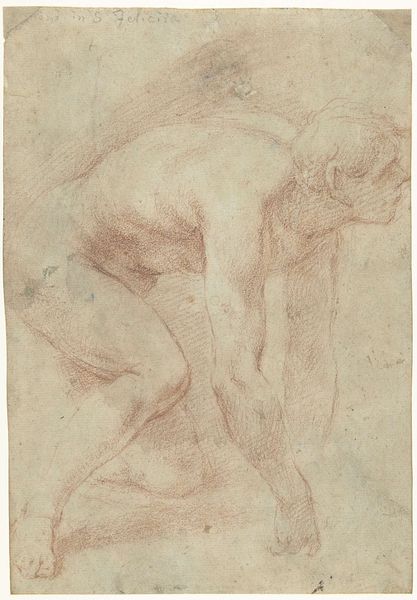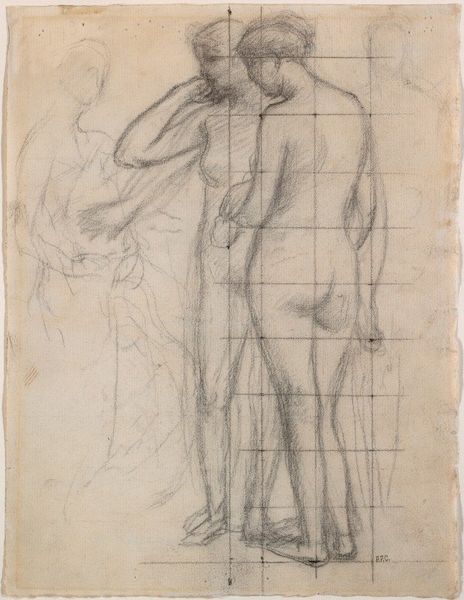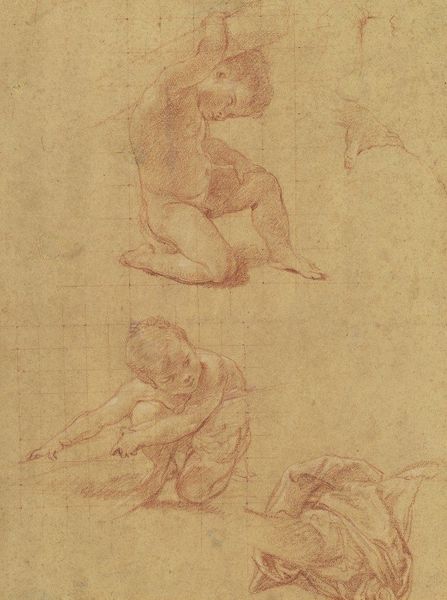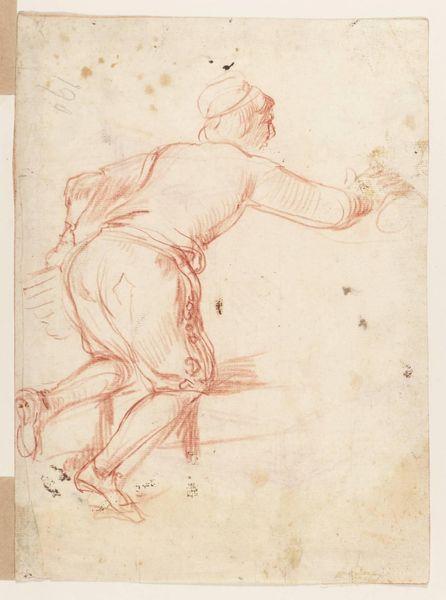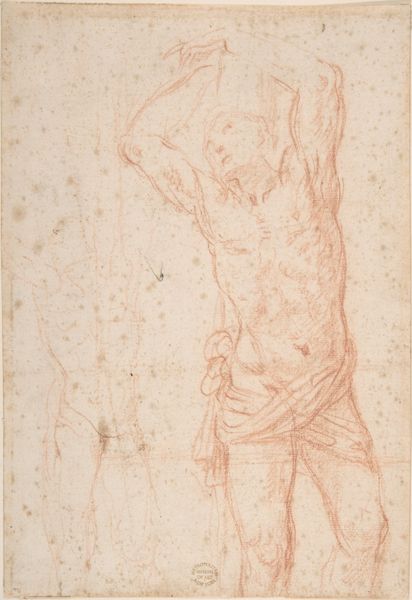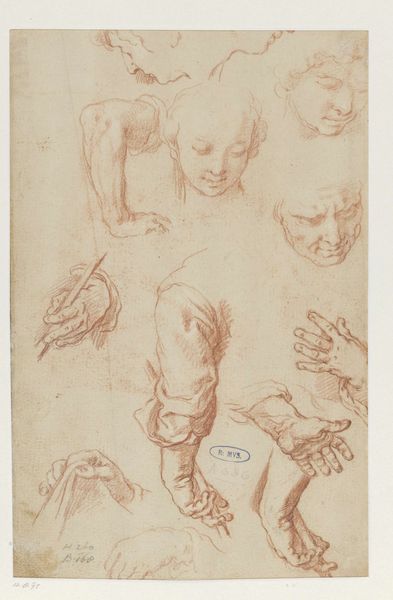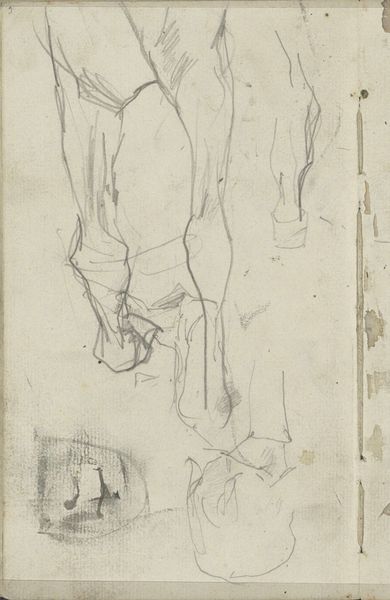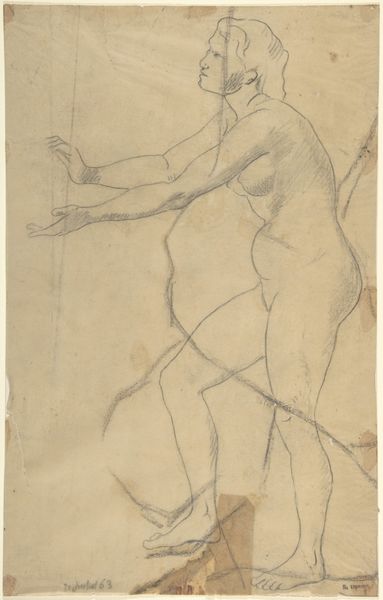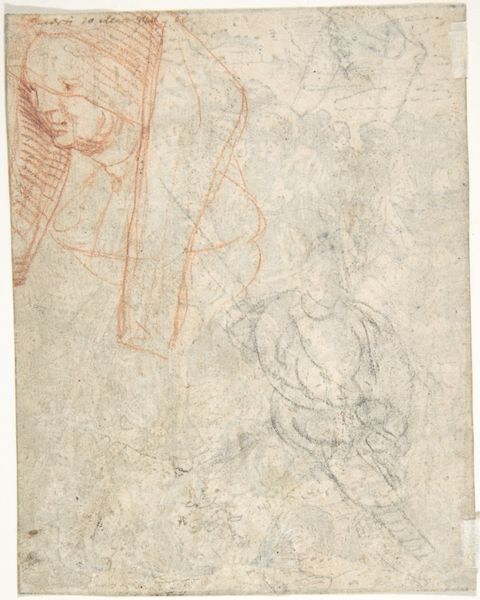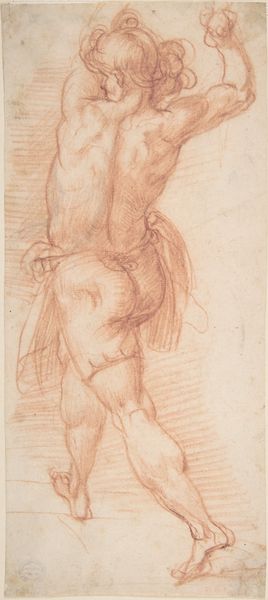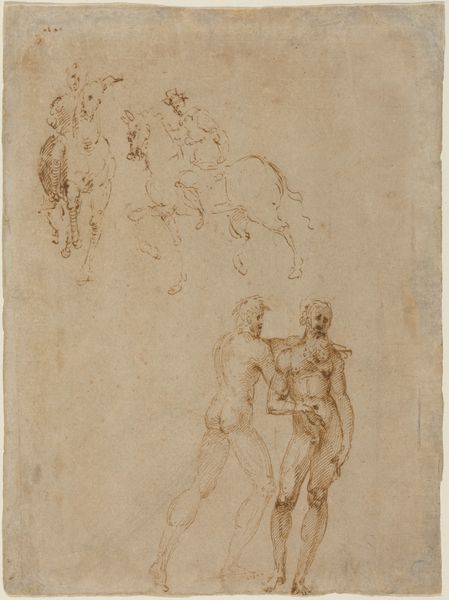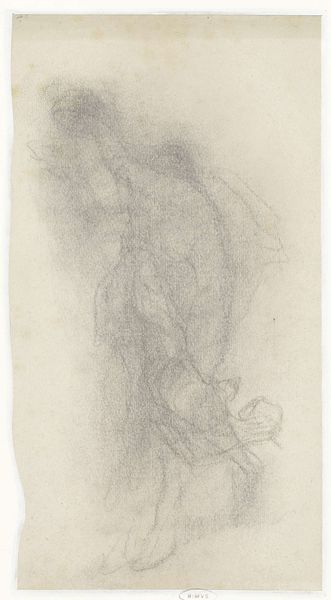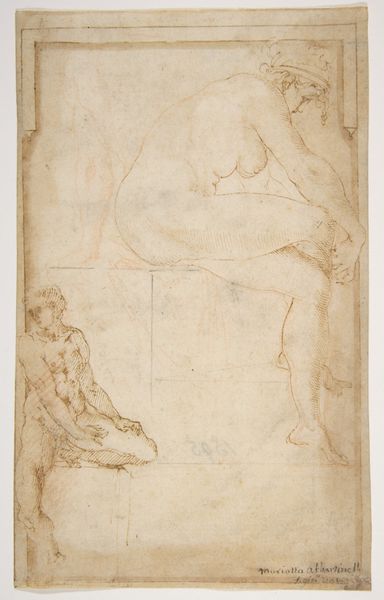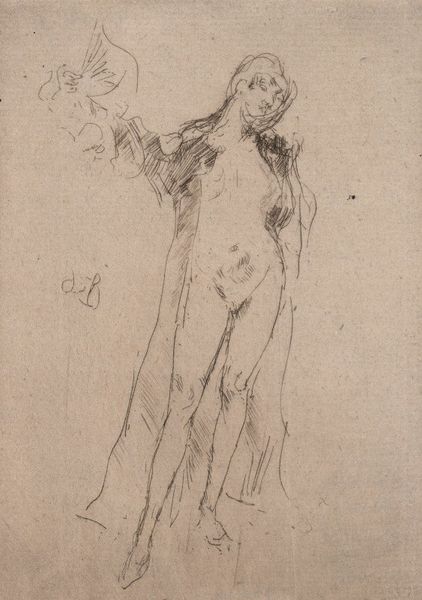
drawing, paper, pencil
#
portrait
#
drawing
#
baroque
#
dutch-golden-age
#
pencil sketch
#
figuration
#
paper
#
pencil
#
genre-painting
Dimensions: height 220 mm, width 178 mm
Copyright: Rijks Museum: Open Domain
Curator: Here we have "Sketch of Two Standing Figures and a Drapery Study," a drawing created circa 1658 to 1660 by Cornelis Bega. It's currently held at the Rijksmuseum. What strikes you about it? Editor: Well, initially, I am drawn to the rather melancholic feeling it evokes despite being a simple sketch. The figures seem caught in a moment of introspection. There’s a stark rawness in the lines. Curator: Indeed. Bega, a Dutch Golden Age artist, often depicted scenes from everyday life, and this sketch likely served as a study for a larger composition. Think of the social conditions during that era—the rise of merchant classes and a changing societal structure often depicted in art. Editor: Absolutely, and from a contemporary perspective, I'm particularly interested in the power dynamics at play. Are we looking at figures engaged in labor? Are those relationships of exploitation? The draped figure above even appears burdened. The limited shading leaves a lot open to interpretation which invites important conversations. Curator: Interesting. Art historians traditionally analyze the drawing within the context of Bega's artistic development and the prevailing genre painting conventions of the time, highlighting his mastery of capturing realistic human figures. I mean look at the precise economy of line defining each of them. Editor: But shouldn’t we consider how images like these helped perpetuate certain social hierarchies and cultural norms? Art isn't created in a vacuum. It actively shapes perceptions. What kind of politics might this artist have engaged in? Was he complicit, critical, or something in between? These questions matter. Curator: Of course. And considering Bega’s probable associations within Haarlem’s art scene provides further nuance, shedding light on the work's provenance and its early reception within a particular artistic community. Editor: So the act of analyzing the drawing becomes an act of conscientization; to unpack and decode the latent biases and ideologies embedded within the lines themselves. Perhaps the figures and their gestures speak more of human resilience than artistic exercise. Curator: A valuable viewpoint, without a doubt, revealing the continued relevance of artworks like these. Editor: Yes. By challenging historical narratives, we can transform them and give the work new value.
Comments
No comments
Be the first to comment and join the conversation on the ultimate creative platform.
